Yes, you can box after LASIK, but it is crucial to follow specific precautions and allow adequate recovery time for your eyes.
Whether you’re an amateur or a professional boxer, proper care and preparation are essential to ensure your eyes heal completely and remain protected before stepping back into the ring.
Understanding LASIK and the Recovery Process
What happens during LASIK surgery?
LASIK (Laser-Assisted in Situ Keratomileusis) is a vision correction procedure designed to reshape the cornea, allowing light to focus better on the retina. This improves vision and treats issues such as nearsightedness, farsightedness, and astigmatism. The procedure is quick, minimally invasive, and offers remarkably fast recovery times.
How long is the typical recovery period?
While most patients experience significant improvement in vision within 24-48 hours after the surgery, full recovery can take up to three months. During this period, your eyes undergo gradual healing, and any initial sensitivity or dryness lessens. Individuals who engage in physically demanding activities, like boxing, must consider this recovery timeline before resuming training or entering competitive bouts.
When Can You Resume Boxing After LASIK?
Why is waiting important?
Boxing is a high-impact sport, which makes it essential to exercise caution after LASIK surgery. The eyes, especially the corneal flap created during LASIK, are most vulnerable during the early recovery phase. Sudden punches or accidental impact can potentially dislodge the flap, especially within the first few weeks after surgery. Although rare, flap dislocations have been reported even months later with significant trauma.
Note: Even after healing, the LASIK flap never regains the full tensile strength of untouched corneal tissue, making it a permanent weak point under extreme force, such as blunt trauma from a punch.
Suggested timeline for returning to boxing
While every individual heals differently, here’s a general timeline for boxers post-LASIK:
- First month: Avoid boxing entirely — including sparring, pad work, and heavy gym sessions — to allow the corneal flap to stabilise.
- 1-3 months: You may resume non-contact training such as shadowboxing, footwork drills, and conditioning, but still avoid any activity with a risk of impact to the eyes.
- After 3 months: Most individuals can begin light sparring with protective headgear. For full-contact sparring or competitive boxing, many ophthalmologists recommend waiting at least 3 to 6 months, depending on your healing progress and risk exposure. Always follow your eye surgeon’s personalised advice.
Precautions for Boxing Post-LASIK
Wear protective gear
Invest in high-quality protective headgear designed specifically for boxers. Look for gear that offers ample padding around the eyes. While headgear cannot eliminate all risks of impact, it significantly reduces accidental blows to the eye region.
Avoid direct eye contact initially
Gradually ease back into training routines that do not involve direct head impact. Use this as an opportunity to improve your technique and footwork while protecting your healing eyes.
Pay attention to warning signs
Even after the initial recovery period, pay attention to symptoms like:
- Blurred or fluctuating vision
- Unusual dryness or discomfort
- Redness or swelling
If you notice any such symptoms, stop all training immediately and consult your eye specialist.
Why Boxers Should Consider LASIK Carefully?
Improved vision enhances your performance
LASIK offers the benefit of clearer vision without the hassle of glasses or contact lenses, which is particularly beneficial for boxers. Peripheral vision improves, and there’s no risk of glasses fogging up or contacts causing discomfort mid-training.
Protecting your investment in vision correction
Boxing naturally involves risks to your physical well-being, but added caution post-LASIK ensures you don’t jeopardise your vision’s well-being after such an important procedure. Think of it as an added incentive to adopt a safer and smarter boxing style.
Alternatives to LASIK for Boxers
If you’re someone who boxes frequently and are still considering vision correction surgery, alternative options like PRK (Photorefractive Keratectomy) might be more suitable. Unlike LASIK, PRK does not involve creating a corneal flap, which may be better suited for athletes in high-impact sports. PRK has a longer initial recovery period, but since it doesn’t involve a flap, the risk of traumatic dislocation is eliminated, making it a potentially better option for athletes in contact sports.
The Role of Your Eye Doctor
Importance of medical clearance
Your doctor plays a crucial role in determining when it’s safe for you to box again. Regular follow-ups post-surgery are non-negotiable. They will evaluate how well your eyes are healing and give you personalised advice on when and how to resume training.
Additional tips shared by specialists
- Use prescribed lubricating eye drops to prevent dryness, which is a common occurrence post-surgery.
- Stick to sunglasses outdoors to shield your eyes from harmful UV rays that could hinder recovery.
- Attend all recommended post-operative checkups to monitor your progress.
MMA Fighters and Similar Combat Sports
For mixed martial artists (MMA) or athletes in similar combat sports, the considerations are fairly similar as boxing. The key difference lies in the fact that grappling, kicks, and elbows come with added unpredictability, which necessitates even stricter adherence to post-LASIK care guidelines.
Athletes engaged in other forms of martial arts like karate, taekwondo, or judo must consult their doctor for sport-specific timelines and precautions.
Balancing Risk and Reward
Boxing after LASIK can undoubtedly be done safely if you adhere to recovery protocols, wear appropriate gear, and ease back into the sport gradually. Always remember, it’s better to err on the side of caution and allow your eyes to fully heal before engaging in high-intensity activities.
For every boxer who dreams of victory, maintaining exceptional vision is paramount. LASIK can be a game-changer, but it demands respect for the healing process.


